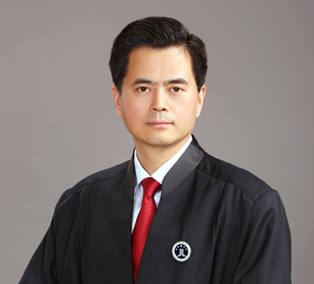Second Circuit Overturns Tiffany’s $21M Judgment Against Costco in Trademark Battle
Despite winning a relatively swift victory in the district court, Tiffany & Co. will not be collecting its $21 million judgment against Costco Wholesale Corp. anytime soon. In a 3-0 decision on Aug. 17, 2020, the U.S. Circuit Court of Appeals for the Second Circuit vacated the district court’s judgment for Tiffany, holding that factual questions improperly decided by the court instead should have gone to a jury.
The dispute between Tiffany and Costco began in 2012 when Tiffany, a well-known purveyor of high-end jewelry, discovered that Costco was using “Tiffany” on point-of-sale signs for certain of its otherwise “unbranded” diamond rings. Tiffany demanded that Costco cease use of “Tiffany” in connection with its rings, and Costco complied. Costco also notified purchasers of such rings that Costco used “Tiffany” merely to indicate that the rings had Tiffany-style settings, and reminded customers that they could return their rings at any time. Still, Tiffany sued for trademark infringement and counterfeiting. In response, Costco asserted that its use of “Tiffany” constituted descriptive fair use.
On summary judgment, the district court found that Tiffany had established liability and that Costco’s fair use defense failed as a matter of law. Following a trial on damages, the court awarded Tiffany more than $21 million in damages against Costco.
On appeal, the Second Circuit vacated the judgment. Key to the Second Circuit’s decision was its holding that, while factual determinations made by the district court should be given “considerable deference,” this deference does not expand the district court’s authority to make factual findings at the summary judgment stage. Instead, the Second Circuit emphasized that district courts should make factual determinations on summary judgment only where “‘the uncontroverted evidence and the reasonable inferences to be drawn in the nonmoving party’s favor’ support only a single conclusion….”
Against this standard, the Second Circuit found that the district court improperly had dismissed Costco’s rebuttal evidence as going merely to the weight of Tiffany’s evidence. First, the Second Circuit appeared to credit Costco’s assertion that a reasonable juror could find that six instances of actual confusion out of more than 3,300 purchases were de minimis. Second and more importantly, the Second Circuit noted that Costco had introduced rebuttal expert testimony that Tiffany’s consumer survey was flawed at least because it surveyed consumers with no present interest in buying a diamond ring, and used contrived and biased stimuli that ignored real-life point-of-sale conditions.
Next, the Second Circuit found that Tiffany had not conclusively established bad faith. The Second Circuit emphasized that a reasonable juror could find Costco endeavored to emulate “useful, nonprotected attributes” of Tiffany’s rings, and that “Costco’s admitted intent to sell jewelry that looks like Tiffany’s — as opposed to an intent to have its jewelry pass as Tiffany’s — cannot be enough to justify a finding that Costco acted in bad faith in connection with Tiffany’s trademark infringement claim.”
Finally, the Second Circuit revived Costco’s fair use defense, which the district court had stricken based on its finding of bad faith. As the Second Circuit explained, “There is nothing inherently absurd about a single word’s being both a source identifier and a descriptive term within the same product class.... [T]he simple fact that a defendant has trademarked a term for use in a particular industry does not preclude a jury’s finding that the term has some descriptive use within the same industry.”
Whether the parties will continue their battle on remand remains to be seen. Regardless, the Second Circuit’s decision may have important implications for brand owners, alleged infringers and practitioners.
First, the court’s finding that a given term can both serve as a trademark and lawfully serve a separate descriptive purpose within the same industry may spur further disputes regarding the protectability of descriptive terms. Second, the decision highlighted a relationship between counterfeiting claims and descriptive fair use defenses, noting that liability for counterfeiting is likely inappropriate where the defendant can show “that it used a term identical to the registered mark otherwise than as a mark.” Third, the opinion reinforces that merely emulating unprotected product features does not conclusively establish bad faith. Litigants accordingly should take care to distinguish protected elements from non-protected elements in their infringement analyses.
Finally, the Second Circuit made it clear that “in the majority of cases,” appellate courts “should review de novo both a district court’s determinations as to each [likelihood of confusion] factor and its ultimate balancing of those factors,” and that the weight of a given piece of evidence can be determinative of whether summary judgment is appropriate. Consequently, district courts may be increasingly wary of granting summary judgment even where the non-movant declines to introduce affirmative evidence and instead simply attacks the weight of the movant’s evidence.
-
Previous:
-
Next:






